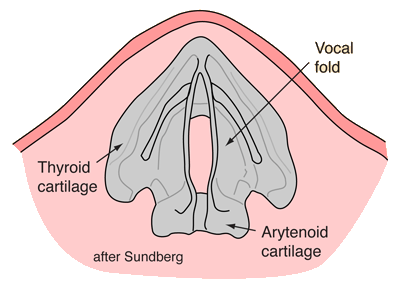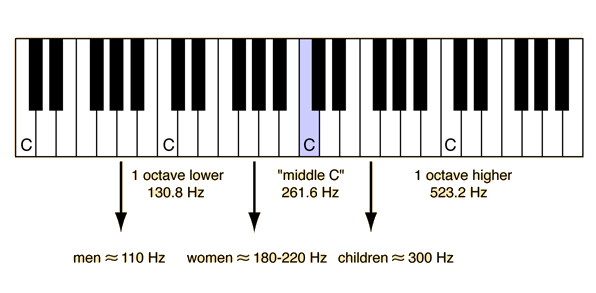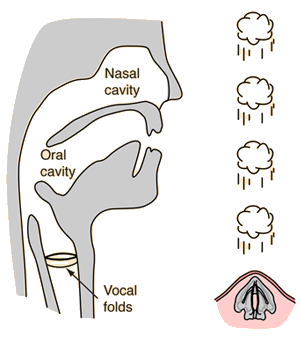The Vocal Folds
Positioned at the base of the larynx in the vocal tract, these twin infoldings of mucous membrane act as the vibrator or "reed" during phonation. Open during breathing, the folds
are closed by the pivoting of the
arytenoid cartilages for speech or
singing.
|
Positive air pressure
from the lungs forces them
open momentarily, but
the high velocity air
produces a lowered
pressure by the Bernoulli
effect which brings them
back together. The folds
themselves have a resonant
frequency which determines
voice pitch.
|

|
In an adult male, the vocal folds are usually 17-23 mm long, and12.5 -17 mm in an adult female (Kaplan). They may be stretched 3 or 4 mm by action of the muscles in the larynx.
The male speaking voice averages about 125 Hz, while the female voice averages about 210 Hz. Children's voices average over 300 Hz. The illustration below shows approximate pitches for speaking voices related to an equal tempered piano keyboard based on A4 = 440 Hz.

The front end of the vocal folds is attached to the thyroid cartilage, the "Adam's apple". The back end is attached to the arytenoid cartilages, which move to separate the folds for breathing.
|
Index
Voice concepts
Musical instruments
Reference
Sundberg
Scientific American, March 77 |





